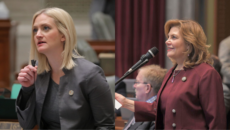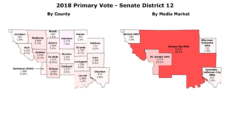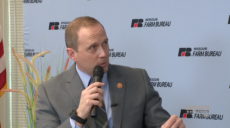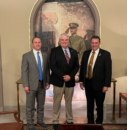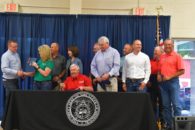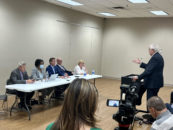JEFFERSON CITY, Mo. — With millions of dollars flowing into Missouri to address the digital divide, internet providers noted one of the biggest obstacles to investing in broadband infrastructure was inadequate coverage mapping.
Charter Communications senior manager for government affairs Mike Mores noted the mapping system used by the Federal Communications Commission (FCC) failed to give providers the full picture of an area’s service: The data is collected on a census block data level, presenting blocks with at least one home receiving service as “served.”
The FCC is working to produce more detailed maps.
“We’ve been looking at areas where we can work with counties to build out but we’re running into this problem,” Mores said. “We support other providers trying to get the FCC to overlay maps so we can actually see where service is at.”
Mapping concerns were a frequent talking point during Thursday’s House Special Interim Committee on Broadband Development hearing. The issue had been broached over the past few months by other providers seeking clarification on what areas were being served and what areas needed expanded infrastructure.
Lawmakers heard a plethora of testimony on broadband access, with more than a dozen witnesses outlining their struggles over nearly five hours.
Representatives from several Missouri counties testified alongside the Missouri Public Utility Alliance (MPUA) on the challenges their constituents faced.
Pricing and speeds were frequently cited as the biggest barriers to those in rural areas facing a new reality amid the pandemic and an increased focus on remote work and school, in addition to stable access across regions with complicated geographies.
Michelle Vondrasek, president of Illinois-based Von Technologies, presented an innovative technology that could remedy the issue.
Remote universal communications, known as RUCs, are systems designed to bring communications services to remote locations across the world through a fiber uplink. The technology can provide access across different terrains, including Missouri’s hills and valleys, and could be rolled out in a matter of months if a contract with the state were secured, according to Vondrasek.
Vondrasek said her company was approved for a pilot program in South Carolina and was in talks with entities in California and several companies, including Chevron.
Kara Corches, director of legislative affairs for the Missouri Chamber of Commerce, said broadband investments were vital for the state’s emerging IT sector. Missouri ranks No. 8 in the diverse technology workforce and No. 10 for women in IT work, according to Corches, rankings she said would improve with a more reliable statewide network.
Missouri 911 Service Board Executive Director Brian Maydwell noted broadband was a vital part of updating Missouri’s 911 system; the current version has been in place for nearly 60 years, and the board hopes to follow other states in upgrading to a modern system allowing texting services, data gathering, and simple 911 transfers, all of which require reliable broadband, he said.
The committee is convening monthly throughout the interim and will file a report on its findings in December.
The report will weigh best practices and possible investments, with plenty of funds on their way for the state to allocate: Missouri is expected to receive a minimum of $100 million to improve the state’s broadband infrastructure under the Infrastructure Investment and Jobs Act, providing access to more than 330,000 residents. The state recently announced a $400 million investment, said to be the largest in the state’s history, as well as a $600,000 federal grant with a state match and other funds.
Missouri ranks No. 32 in broadband access with 147,000 unserved or underserved households and more than 392,000 individuals without reliable internet access, according to the Office of Broadband Development. However, the state has made drastic improvements despite the high numbers, substantially increasing its ranking since 2018.

Cameron Gerber studied journalism at Lincoln University. Prior to Lincoln, he earned an associate’s degree from State Fair Community College. Cameron is a native of Eldon, Missouri.
Contact Cameron at cameron@themissouritimes.com.







